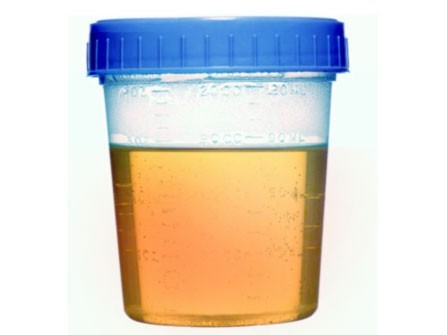 New Health Guide
New Health Guide
The kidneys are responsible for the removal of salt, excess water and other waste from the blood. This procedure of removal is handled by the glomeruli in the kidneys where blood is filtered. The glomeruli also prevent protein from being taken out of the blood. When the glomeruli are damaged, the protein will leak out of the blood and appear in the urine.
Under normal circumstances, you should only have about 150mg of protein in your urine. This is a very negligible amount, as it is only about 3% of a teaspoon. Having more than 150mg of protein in your urine could be an indication of a kidney disease. This can be very dangerous as proteinuria is hard to diagnose given that it is painless.
 Also known as albuminuria, proteinuria is a condition whereby the kidneys release an excessive amount of protein into the urine. Protein is transported to body organs and tissues through the blood. The kidneys help keep the protein in the blood by blocking passage. Proteinuria causes the protein in the blood to pass through the kidney into the urine. High blood pressure is a common cause of this condition for that the high blood pressure damages the kidneys, which in turn leads to the passage of protein into the urine.
Also known as albuminuria, proteinuria is a condition whereby the kidneys release an excessive amount of protein into the urine. Protein is transported to body organs and tissues through the blood. The kidneys help keep the protein in the blood by blocking passage. Proteinuria causes the protein in the blood to pass through the kidney into the urine. High blood pressure is a common cause of this condition for that the high blood pressure damages the kidneys, which in turn leads to the passage of protein into the urine.
There are 3 categories of proteinuria – orthostatic (tied to lying down or standing/sitting), persistent (present throughout) and transient (intermittent).
This is a case of proteinuria where one loses protein in the urine whenever they are in an upright position. There is usually no loss when they’re lying down. Orthostatic proteinuria only affects about 2-5% of adolescents. It is very rare in people aged over 30, and the cause is still unknown. This type of proteinuria is rarely fatal. It requires no treatment and usually goes away with age.
Diagnosis is done by obtaining a split urine collection. This requires that you collect 2 urine samples. One is collected after you’ve had a few hours of sleep and the other while you’re sitting up or standing during the day.
This is a type of proteinuria that occurs in people with underlying medical conditions. These include kidney disease, diseases that affect the kidney e.g. diabetes and diseases that cause overproduction of protein.
This is the most common proteinuria. It is normally caused by stresses such as exercise and fever, and does not require treatment to resolve.
At times, proteinuria may not show any symptoms. Nevertheless, left untreated, symptoms will start appear. They include:
Proteinuria can also be life threatening at times. Seek out medical attention immediately if you develop the following symptoms:
After you have done a urinalysis test and detected the presence of protein in your urine, make sure to seek clarification from your doctor if you need any more tests done. Having a second test done is usually important as the presence of protein in the first test could be temporary. Typically, you should have the second test done a few days later, preferably in the morning.
Your doctor could also opt for a 24 hour urine collection test to rule out any concerns.
During normal function, your kidneys help with the removal of waste products from the body. While at it, it also retains vital nutrients such as proteins. However, there are medical conditions that can interfere with the kidneys’ ability to retain protein. Consequently, this leads protein in urine.
|
Type |
Description |
|
Temporary |
These are conditions that lead to temporary rise is protein levels. They include:
|
|
Persistent |
These are conditions that can lead to increased levels of protein in urine persistently. These include:
|
Diabetes and high blood pressure are the 2 most common risk factors of Proteinuria. These two conditions can lead to kidney damage which in turn leads to Proteinuria. While these two are the most prominent, there are also other kidney diseases that can lead to the presence of protein in urine. These include:
Over production of protein in the body can also cause Proteinuria. Good examples of this condition are amyloidosis and multiple myeloma.
Other risk factors:
In some cases, more protein leaks into the urine when lying down than when standing. The vice versa is also true.
The test for proteinuria is really simple. There are 2 major tests:
This test works by checking the amount of albumin in the urine. Albumin is a type of protein. The test is performed by comparing the presence of albumin to creatinine. Creatinine is body waste. Normal UACR is anything less than 30mg/g¹. If the test yields more than this, you should schedule another test.
The name of the test describes it to a tee. To carry out the test, you will need a sample of your urine. The dipstick should show the amount of protein in your urine.
Proteinuria is not a disease. It is a manifestation of an underlying condition. Treatment depends entirely on managing the condition causing it. Should it be caused by kidney disease, then it should be properly managed. Nevertheless, mild proteinuria does not need treatment.
Sometimes, drugs are prescribed to those suffering from high blood pressure and diabetes. The drugs are classified into 2:
Proper treatment is critical for those suffering from high blood pressure and diabetes in order to put a stop to the progressive kidney damage these conditions cause.